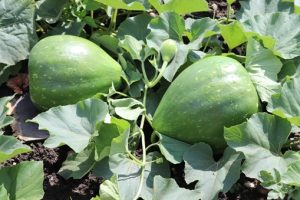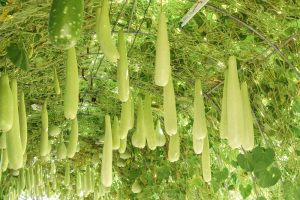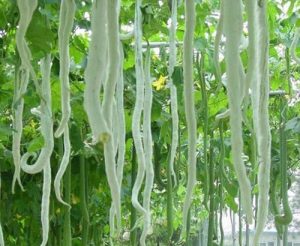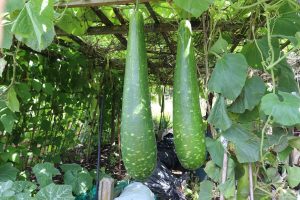Gourds Seeds
Bottle gourd can vary in size shape and length depending on how it is grown and when it is harvested. It can be short and round, uniformly cylindrical, curved, bulbous, or extremely long and thin. Its skin is most often smooth though there are some varieties that are covered in fine hairs. Its colouring can vary from a light green or chartreuse to dark green. The interior flesh is creamy white with petite seeds that when young are tender and edible but when more mature become hard and should be removed prior to consumption. Young bottle gourd squash offers a mild flavour reminiscent of summer squash and cucumber with a firm texture.
Bottle gourd, botanically a part of Lagenaria siceraria is a vine and a member of the Cucurbitaceous family. When young it is utilized as a vegetable in preparations similar to that for squash and once mature it can be dried and hollowed out to make utensils, musical instruments and vessels. The Bottle gourd has a rich history and was one of the first cultivated plants in the world. It is known today by many different names throughout the world, most notably as a Calabash, Opo, Cucuzza and Long melon.
-
 Rated 0 out of 5£4.00Select options This product has multiple variants. The options may be chosen on the product page
Rated 0 out of 5£4.00Select options This product has multiple variants. The options may be chosen on the product page



